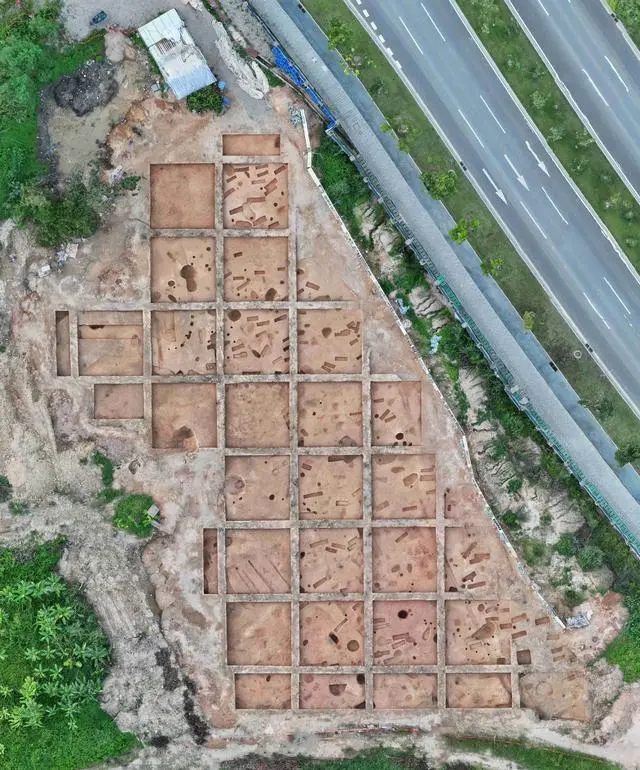
This aerial drone photo taken on July 23, 2024 shows a view of the late Neolithic Age site in Huangpu district, Guangzhou, South China's Guangdong Province. Photo: Xinhua
A total of 419 ruins as well as 341 artifacts have been found in Guangzhou, South China's Guangdong Province, according to a report by Xinhua News Agency on Friday, citing sources from the municipal cultural relics and archaeology institute.
Located in Huangpu district, the Late Neolithic Age site dating from about 4,600 to 4,300 years ago consists of 143 tombs, 140 ash pits or cellars and 125 column holes. A total of 341 items or sets of relics including pottery and jade decorations have been unearthed from the site during recent excavation work.
The findings have made it a Late Neolithic Age site with the hitherto largest number of tombs uncovered in the Guangdong region, with complex relics, rich contents and a multitude of unearthed artifacts, according to Zhang Qianglu, the head of the institute.
"This discoveries provides important physical materials for constructing the archaeological cultural lineage from the Late Neolithic period to the early Western Han Dynasty (202BC-25AD) in Guangzhou and even the Pearl River Delta region," Zhang added. "It also lays a solid foundation for the continued promotion of the project to trace the origins of Chinese civilization in the Lingnan region."
Starting from 2017, the institute has been carrying out excavation and research work on the site. Previous archaeological excavations revealed a total of 304 tombs from the Late Neolithic period, yielding a total of 702 artifacts (sets) made of pottery, stone, jade, and other materials.
Global Times




